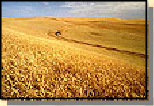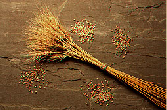















7th February 2007

How much more fundamental can we get than the study of food!








Food is something with which everyone can relate – unless you’re an android you probably eat quite a lot during a week – We all know what we think is a good product but analysing what makes it good is a little more difficult and certainly where some research and study comes in. GCSE Food technology is about understanding food, understanding the constituents of products and understanding the process of analysis associated with the marketing and designing of good food products. ‘Catering’ is an embodiment of all of this.
But let’s think back to the time when we didn’t have processed foods – before in fact we even started mixing things together and making ‘new’ foods that we thought were useful…. We were into eating meat, fish, fruits and organic stuff such as roots and leaves. We were ‘hunter gatherers’ and that’s how we stayed for quite a few thousand years. As climate changed and ice sheets came and went we were moved to new areas that would support us. And as one area became overpopulated and unable to support the communities living within it so groups would extend their interest to new areas. If you check out how modern humans arrived in the different continents you would notice it was by way of the easiest routes – the open grasslands – the areas that weren’t too mountainous – areas that supported animal life that we could hunt – Or of course we moved along the coasts using the food supply from the fish in the oceans.
Archaeologists notice the time at which the hunter-gatherers were replaced – or at least affected by those that developed tools to use - and techniques to manipulate the world around them. Archaeologists also notice that early farmers had teeth that were ground down by the constant abrasion of roughly ground seeds – the seeds from early grasses – oats, barley and wheat.
The wheat strains that are farmed today are very different from those early varieties. Farmers thousands of years ago applied their minds to selecting the best varieties and crossing them with other strains to improve the amount and quality of the grain harvest. Yield improved and in-bred resistance to insects and pests effectively allowed more people to survive in a smaller area of land – and this trend has continued. If you check the number of farmers that were needed to support the population of a country the size of the UK in the early years of the 1900’s you would find that there were far more people tending the land.
Checking around the world - different countries have based their diets on crops better suited to their climates and their needs. Maize is a staple food of a large area of the American continent whilst Rice is found more frequently across Asia and the eastern countries. Compare this situation with today.
We transport food from far across the world because it may grow better elsewhere or because we have all become used to having a large variety of foods available at all times of the year. It wasn’t that long ago that fruits such as Peaches, raspberries and other similar fruits were only around in the summer and Autumn in the UK.... And it wasn’t too far before that when fruits such as bananas were unavailable at all.
With the rising costs of transport and the use of fossil fuels contributing to accelerations in global climate changes - according to many scientists - we may need to address the levels of consumer expectations to more realistic levels.
But let’s think back to the time when we didn’t have processed foods – before in fact we even started mixing things together and making ‘new’ foods that we thought were useful…. We were into eating meat, fish, fruits and organic stuff such as roots and leaves. We were ‘hunter gatherers’ and that’s how we stayed for quite a few thousand years. As climate changed and ice sheets came and went we were moved to new areas that would support us. And as one area became overpopulated and unable to support the communities living within it so groups would extend their interest to new areas. If you check out how modern humans arrived in the different continents you would notice it was by way of the easiest routes – the open grasslands – the areas that weren’t too mountainous – areas that supported animal life that we could hunt – Or of course we moved along the coasts using the food supply from the fish in the oceans.
Archaeologists notice the time at which the hunter-
The wheat strains that are farmed today are very different from those early varieties. Farmers thousands of years ago applied their minds to selecting the best varieties and crossing them with other strains to improve the amount and quality of the grain harvest. Yield improved and in-
Checking around the world -
We transport food from far across the world because it may grow better elsewhere or because we have all become used to having a large variety of foods available at all times of the year. It wasn’t that long ago that fruits such as Peaches, raspberries and other similar fruits were only around in the summer and Autumn in the UK.... And it wasn’t too far before that when fruits such as bananas were unavailable at all.
With the rising costs of transport and the use of fossil fuels contributing to accelerations in global climate changes -







